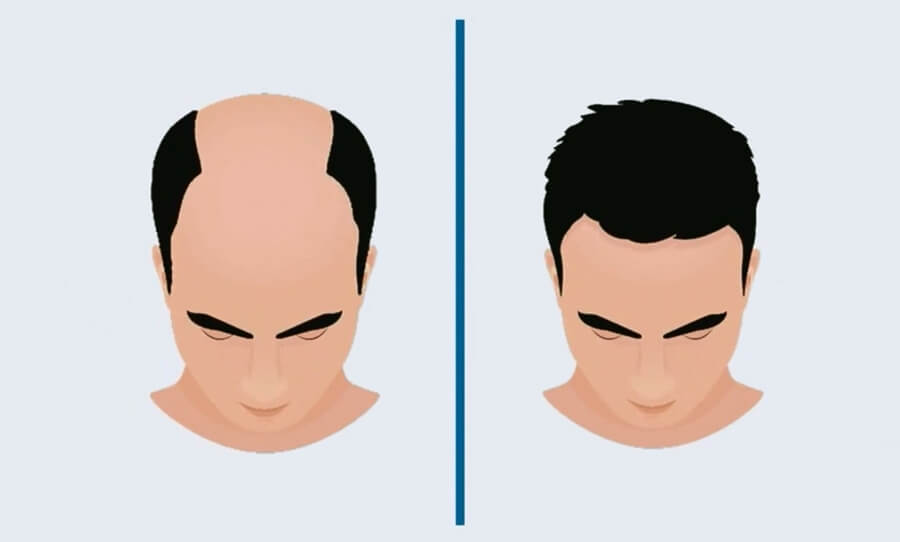Table of Contents
Over the past three decades, technology has gained a lot of ground, and hair transplant has not been left behind. The procedure is significantly safe and quick. Usually, it’s an outpatient affair and not much inconvenience for the patient. However, most potential hair transplant recipients want to be sure of the risks involved.
Like most medical operations, hair transplants come with their fair share of risks. The doctor will likely give you a detailed breakdown during a consultation. Regardless, this article will give you a general look at some complications that may arise from Follicular Unit Extraction(FUE).
FUE Transplant Complications

FUE hair transplant is usually a harmless process. It takes some time to get it done, but the complications are close to none. However, there are still some concerns by some patients. It is important to note that these complications are usually temporary. Here are the main ones.
Allergic reaction to anesthesia
An allergic reaction during surgery is very rare but very dangerous. Allergies are defined as unusual and excessive reactions to certain substances, mainly dust particles, pollen, or certain foods. However, some patients have developed an adverse allergy to anesthesia. This is generally an immediate reaction. During FUE hair transplant, anesthesia is used, and doctors do not necessarily anticipate an allergic reaction. Some studies have suggested that the allergic reaction may be a result of fear before the surgery. Not an actual allergy to anesthesia. However, this is no reason to be fearful since the surgeon is well equipped to deal with such instances.
Scars
This is not a common side effect attributed to FUE hair transplant, but scarring occurs. Do not forget that this is a surgical operation, and scars usually occur. Unlike its counterpart, Follicular Unit Transplant(FUT), FUE does not leave excessively visible linear scars. Instead, it is tiny dot-like scars, which may or may not be visible to the naked eye.
FUE uses pin-like punches to extract and transplant hair. These picture holes left behind are mostly not visible to the naked eye. However, in some instances, they are noticeable. But this is only possible if the surgery wasn’t done correctly. Long hair around the donor area will completely hide any scarring left behind.
Baldness in Donor Area
The harvesting process related to FUE transplant can be detrimental to the scalp if it is not managed correctly. As stated before, FUE does not leave behind visible scars. However, much harvesting in one area leaves behind a visible bald spot. This is a result of accumulated tiny scars on the donor area.
Apart from the bald spot, over-harvesting can and will reduce the density of the donor region. This leads to eventual hair thinning. A qualified surgeon will ensure that harvesting is done uniformly and that the scars left behind will not be conspicuous.
Harvesting from High-Risk Areas
In a hair transplant, there are scalp regions that are considered high risk. These are areas that are at risk of hair loss. For there to be healthy hair growth, the harvested hair must be from a healthy donor region. A high-risk area means there might be poor growth, low density, or eventual balding.
The recipient area may also suffer from poor growth in terms of unevenness and or just no growth at all. With FUE having a second surgery may be difficult since the donor region may not recover from the harvest.
Follicular Infection
Also known as folliculitis, follicular infection results from inflammation caused by bacterial infection in the hair follicles. It is not a common complication, but it usually occurs if the patient doesn’t take necessary hygiene practices. In some cases, the patient may be suffering from skin infection in the recipient area before the transplant. A typical infection will exhibit symptoms such as a red bump with a pimple-like appearance.
It should not cause any worry since, in most cases, it clears out within a week post-surgery. If the symptoms persist or the infection becomes severe, please visit a doctor.
Shock Loss
Shock loss is a term used in hair transplant to describe hair thinning after transplant surgery. It is visible after a week to a month post-surgery. Doctors attribute this to the shock the scalp endures during surgery. This is a temporary complication that will show recovery four months after the surgery.
You may also notice discrepancies in hair growth direction and rates. A well-done FUE hair transplant surgery will allow you to keep your hair short until the scalp recovers. If patience is not a virtue, doctors can advise on proper meds to lessen shock loss.
Hemorrhage
Though not a common occurrence, hemorrhage is still a complication after surgery. FUE hair transplant uses punctures to the scalp to extract and transplant hair follicles. These punctures, though small, usually cause some degree of bleeding. Thereon, the doctor places bandages to keep bleeding at bay. This is not always the case, as some patients do not bleed enough to require bandaging.
The surgical dressing is placed lightly on the affected area. Too much pressure can cause pain to the patient and even more bleeding. A scenario they were trying to avoid in the first place.
Throbbing in Recipient Area
Like most post-surgery complications, throbbing after surgery is also part of an FUE hair transplant. The patient may experience different sensations, such as the urge to scratch the affected area. This may last between 3-5 days after a hair transplant. Good skin-care practices will minimize the sensation. Clean and moisturize the region instead of giving in to the itching.
Scuffing the affected area will be harmful to the process. Eventually, the sensation will go away. Still, if the symptoms persist more than the recommended days, you should visit a qualified doctor.
Skin Discoloration
Another common complication is skin discoloration. Although it is not something to be concerned about, skin discoloration may be uncomfortable for others. These are scars that sometimes appear lighter than the surrounding scalp skin. In the past, FUE hair transplant used larger hair extraction tools. This resulted in visible scars on the scalp, which eventually became lighter in color.
Fortunately, technology has made the process unnoticeable to the naked eye with smaller punching tools. It ranges from 0.89mm to 0.69mm. Visible skin discoloration is now a thing of the past.
Cough
One of the most common effects of surgery is coughing. According to doctors, anesthesia suppresses some of your body’s impulses. This includes coughing. This may cause, to some extent, build-up in the chest area. So it is quite common that after the anesthesia, what’s out you will have about coughs.
This is not something to cause alarm. However, if the coughing continues, visit the doctor as soon as possible.
Conclusion
Hair transplant complications are not common, and FUE is the best in the current market. This means the complications are minimal. Even if communications arise, it is usually temporary and not life-threatening. So if you are interested in an FUE hair transplant, have no fear. Just visit a certified clinic or doctor.

